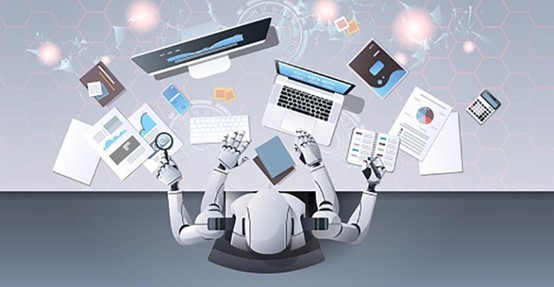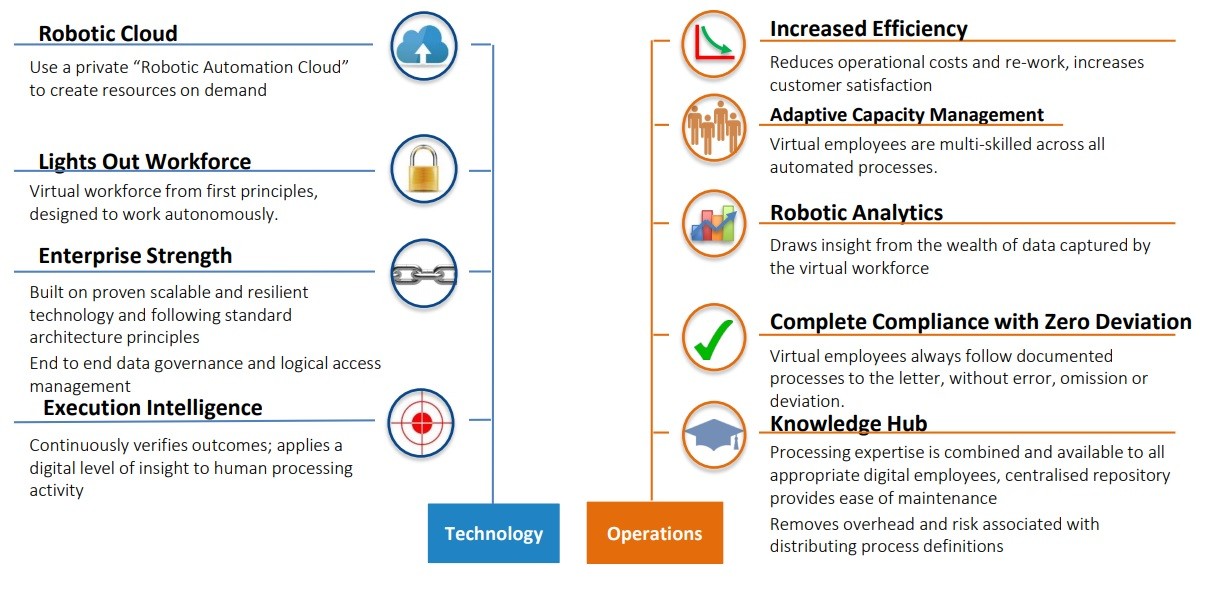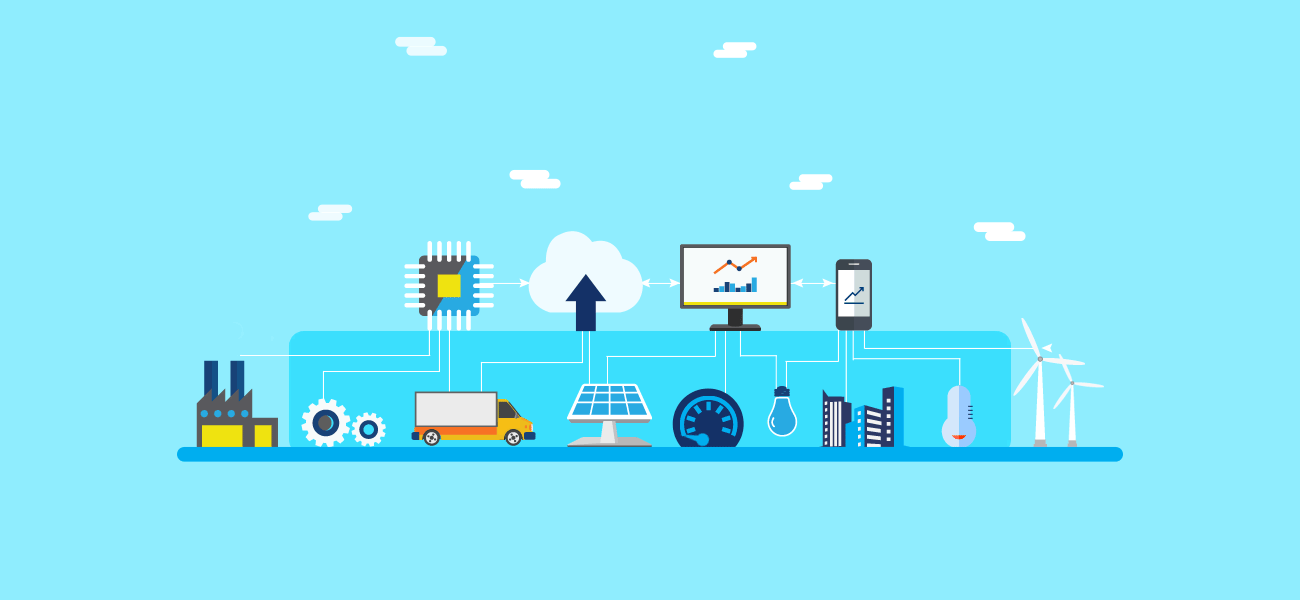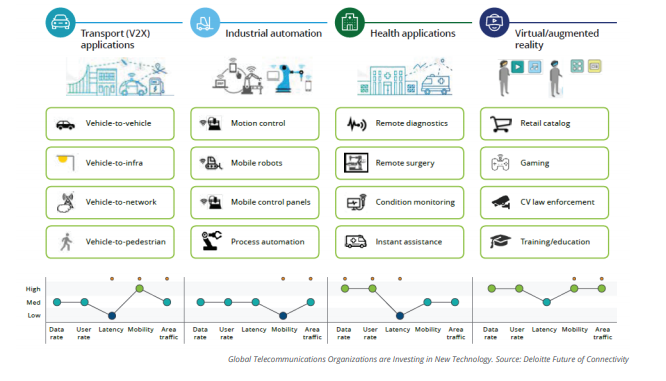
Robotic Process Automation
How is Robotic Process Automation mitigating Covid-19's impact on Business and our Day to Day lives ?
Introduction:
COVID19's epidemic moved the world into uncharted territories. Of course, the result is also profound for companies! When most of the workforce is expected to work remotely, with minimal access to the workplace and face-to face interaction, how can we keep business as usual?
The importance of remote work arrangements, as well as automated/digitalized service delivery, has never been more imperative in view of these obstacles. There are many instances around the world where Robotic Process Automation (RPA) and greater digitalization are helping businesses deal with this global pandemic.
For the middle market, the need to quickly adapt is a question of survival.
The formula for market sustainability is complex: budgetary effectiveness may be the main component, but cost management is too often at the expense of profitability and organizational agility. For adaptability, cost savings and operational efficiency are required.
What is RPA?
Robotic Process Automation is a technology that enables anyone today to program computer software or a robot to mimic and incorporate the behaviour of a human being communicating with digital systems in order to carry out a business process.
RPA robotics use the user interface to collect data and control programs much as humans do. They view, activate and communicate with other devices in order to execute a wide range of routine activities. Just significantly better: the RPA software robot never sleeps and makes zero errors. However, the use of Robot Process Automation (RPA) will help to maintain market continuity, efficiency, and versatility in a period of substantial change of existing labor and conventional operating methods.
A classic candidate for RPA would be one where three key characteristics are fulfilled, normally within an end-to-end process that crosses multiple applications:
1. That the actions are consistent, with the same step being performed repeatedly;
2. That it is template driven, with data being entered into specific fields in a repetitive manner;
3. That it is rules-based, to allow decision flows to alter dynamically.
In such situations the employee sits in the middle, having oversight for the robotic performance without wasting time on the manual tasks involved.
RPA Benefits
Cost savings:
RPA projects can save significant cost. ROI is carried out immediately, compensating for the initial investment. A smaller implementation with 10 bots or less can be implemented relatively cheaply and quickly. RPA can increase product quantity and quality, while allowing personnel resources to move to more valuable tasks or to be redeployed in other parts of the company — all of which contribute to the economy of automation. This is imperative in the current climate.
Speed:
RPA can cut down the amount of time spent on manual work by order of magnitude — an essential requirement during the pandemic if lost time results in loss of life, as is the case for medical care providers and medical supplier manufacturers.
Productivity:
Many enterprises have been forced to lay off or sell workers as their revenues have declined. Productivity must be maintained with fewer resources. By automating part of the day-to-day workforce, employees can focus on activities which require the resolution of human problems.
Going virtual:
With all non-essential businesses forced to stop working personally and to stop vaccinations until a vaccine is still available from 1 year to 18 months, businesses must facilitate highly efficient remote work as quickly as possible. RPA can be used to speed the setup process, ensure that employees have the right Wi-Fi at home and are registered for new home office equipment.
Business continuity: In some cases, automation can protect the physical health of staff by limiting exposure. For instance, key firms use bots to assess the current health and COVID-19 risks of each employee. It helps to determine every day, based on the survey responses, if the person is sufficiently vulnerable to work. This use of RPA could help with the phased reopening of parts of the country and the prevention of widespread occupational infection. Accuracy: RPA enables you to eliminate the human error margin which is between 5% and 10% for repetitive tasks. Improved accuracy and quality of the work product is essential for high-level tasks. We researched and are putting down some real case studies where RPA came handy in solving real challenges faced by people during Covid 19. Challenge 1: Due to the COVID-19 crisis, a South American retailer has faced several obstacles in its HR department. It had to respond to increased demands for payouts from workers leaving the business as well as new employees onboarding process. Solution: RPA was introduced to respond to portal requests and to automatically produce employee payout letters, as well as to facilitate the registration and activation of new hires. RPA fast-tracks onboarding procedures for workers, removing the need for multiple systems to input similar details. A software robot will run processes for screening and background checks, upload application data, and inform employees that the employee is prepared to be on board. In multiple systems, a software robot may also input employee details to complete tasks, including creating badges, granting access to the system and ordering uniforms. Challenge 2: The conventional service delivery model of business process outsourcing (BPO) allowed agents to physically scan in and scan from their sites to record their hours. The BPO needed to transfer tens of thousands of service delivery agents to a work-at - home model because of COVID-19. On the ground the need can be anywhere in the organization, and BPOs have used RPA solutions to unlock value for a host of multinational organizations in a wide range of areas that include: Solution: Automated Bots was deployed to track the availability and hours worked by each agent remotely. This information was captured into a database by the bot. Automation Anywhere Bot Insights generated regular reports and circulated the dashboard to managers and other stakeholders on remote user hours and productivity. Challenge 3: The COVID-19 pandemic led to a rapid rise in the number of patients who needed oxygen-supporting continuous positive airway pressure (CPAP) or ventilator units. The Northampton General Hospital team agreed to closely monitor oxygen tanks to ensure that continuous and reliable readings were readily available, although supply was not expected to be a problem. The initial method of oxygen monitoring was manual, and as data was collected from one computer and input into another, the hospital needed to free up resources and reduce the risk of needless errors. Solution : A project team, led by IT, was formed to investigate, and incorporate a solution for Robotic Process Automation (RPA) to minimize dependency on human interaction. Within just 12 hours of the initial kick-off meeting, close coordination between IT, those with experience implementing and executing RPA solutions around the National Health Service ( NHS), Estates and Hospitals, who handled the oxygen supply, and Automation Anywhere members, contributed to the development of a bot. The bot ensures accurate information is given to medical workers 24 hours a day with data and flow rate measurements. For other significant projects, an estimated 1,500 hours of capability was released, and trust was instilled that any problems would be flagged to the team immediately. Through arming incident teams with the necessary details, automating the collection of data mitigates clinical risk within the hospital, enabling them to continuously analyze the organization's needs. Challenge 4: Because of the pandemic a corporation for medical equipment’s was very important to distribute the equipment’s across the globe because the demand was very high and the there was no time. Solution- The business deployed intelligent Bots via online forms, fax, and Excel spreadsheets to process high-volume of orders sent by the distributors around the globe. Key information was scanned and extracted by the bots, the details was then entered in the ERP system, and a confirmation email was sent upon delivery. Challenge 5: Sending the field technicians out on-site for troubleshooting is costly and time-consuming. Remote troubleshooting, diagnostics, and remote updates are difficult without data visibility. With the COVID-19 crisis, the technicians' time and expertise should be concentrated on maintaining the network. Solution- To conduct configuration and reconnection behaviour, one global operator conducted constructive CPE tests on the routers daily. To ensure operation, RPA proactively detected and conducted automatic port resets. Robots are increasingly becoming a part of everyday life. The sooner you reap their potential, the better you can establish a competitive advantage for your company. Robotic Process Automation provides direct profitability and improved accuracy through an organization's multiple sectors. Not only will it streamline your company's workflow, but it will also improve scalability and flexibility by delivering a quick, reliable and customized response to specific needs. Software robots can be easily trained, and it can be easily integrated to your existing system because they are non-intrusive and can take advantage of pre-existing infrastructure.

Combating Covid-19 with a digital workforce

Business benefits of RPA